Shoulder Dislocation Treatment Surgery | कंधे की हड्डी खिसकने का उपचार
- 1.59K
- 2 months ago
Dr. Manpal Singh Narula
Dr. Manpal Singh Narula
Shoulder Dislocation Treatment Surgery
In this video, our SimpliHealth expert, Dr. MS Narula, Senior Consultant Orthopedic Spine and Joint Replacement Surgeon at Apollo Clinics and CHD City Hospital, Sector 8, Chandigarh, is talking about the traumatic injury: Shoulder dislocation. He also explains the shoulder dislocation treatment surgery.
Mostly we see it in younger people with a history of falling; it could be an accident or any fall or very common in sports injury; often, sportsmen say they had shoulder dislocation. The patient comes to go to the doctor with intense pain and a frozen shoulder (inability to move).
Usually, they come go to the doctor in an emergency by supporting their arm with another hand, keeping it a little farther from the body and slightly tilted upwards.
TYPES OF SHOULDER DISLOCATION | Shoulder Dislocation Treatment Surgery
Anterior dislocation
There are two most common types of shoulder dislocation: anterior dislocation, seen in 90% of cases. Anterior dislocation means our shoulder joint is like a ball-socket joint, so when this ball comes towards the front, the doctors call it anterior dislocation.
Posterior dislocation
And if this ball moves backward, leaving the socket behind, which we call this posterior dislocation. This ball may sometimes move towards the bottom (inferior), but we often see anterior dislocation followed by the posterior and inferior. As Dr. Manpal mentioned, it usually occurs due to an injury which could be due to an accident or fall or sports injury, and the patient has severe pain.
Anterior dislocation is a more common type of dislocation after an injury or fall, whereas posterior dislocation is rare. It usually occurs after convulsions, like if the patient has an epileptic fit or ECT therapy, their arm moves inside for any reason.
So the ball rolls towards the backside, which we call posterior dislocation. Clinically patient comes to us with severe pain, unable to lift their arm, and the shoulder becomes slightly flat as the ball comes towards the front. If the patient is very lean, we can easily visualize the ball coming out in the front.
Diagnosis
Usually, patients present their arms like this. It is a severe condition. So in an emergency, when we see the patient after an injury or fall, the first thing we do is manage the pain by administering a pain killer, and then we go for an X-Ray scan. There is a clinical test in which we can diagnose anterior dislocation quickly since they cannot touch their other shoulder.
The patient cannot move their twisted hand, so clinically, when we see a condition where the patient cannot touch the opposite shoulder, we suspect it could be shoulder dislocation. In X-Ray, we can visualize the dislocation of the ball from its socket. And then, we plan for treatment.
TREATMENT OF ANTERIOR DISLOCATION
In 90 % of the cases, we perform a close reduction. By that, I mean we fix it with particular maneuvers, but here I would like to request you to please visit your orthopedic surgeon because I often hear patients saying they had a shoulder dislocation, went to quack, and healed it.
Sometimes there is no dislocation. Instead, it is soft tissue injury, but quack people interpret soft tissue injury as shoulder dislocation and treat it. So please beware of all this. I want to caution you all about this. Whether you have an injury, it could be a rotator cuff or any damage, they visit the quack, consider everything as dislocation, and treat it accordingly.
But this is very untrue. A shoulder dislocation is an acute event; it’s not like it occurs without reason. There is always a history of injury or fall, or trauma. We can diagnose shoulder dislocation by X-ray. Once we diagnose it, we make a closed reduction. We perform this procedure under anesthesia, and there are some maneuvers, and we stretch retraction or press our foot over the armpit and pull the arm. you can reduce it with a click. It’s a 15-20 minutes procedure that the doctor performs under anesthesia.
Then we tie the patient’s arm with the chest for 3-4 weeks. So this treatment works in 90-95% of cases. First, we immobilize the injured arm. In scarce situations, it doesn’t reduce; then we plan a surgery. We do open reduction surgery in which we make an incision and fix the ball in a socket. If the patient comes to us at an early stage in the first 4-5 days or roughly 2-3 days, we can heal it by closed reduction. Only if the patient comes to us very late or the patient is very muscular or obese then the ball doesn’t fix in the socket on its own.
COMPLICATION OF SHOULDER DISLOCATION
There can be some fractures associated with shoulder dislocation. As I mentioned earlier, it’s a ball and socket joint, and when there is dislocation of the ball, there is a tear in nearby ligaments, muscles, soft tissues, and capsules. Only then the ball would dislocate. Otherwise, it is a solid joint wrapped firmly inside muscles and ligaments. So there can be an injury to muscles and ligaments.
Along with this, there can be fractures in some portions of the ball. There might be fractures in the cup. But most of the time, these fragrant fractures heal on their own when we fix the ball into the socket. Again under these circumstances, we don’t require surgery after reduction.
When we do an X-Ray, we see the ball inside the socket. And the part of the fracture has come back to its original position. So most of the time, surgery is an option.
But we operate in some cases where the fracture doesn’t sit in its original place. Or the dislocation does not reduce.
WHAT IS THE COMPLICATION OF ANTI-DISLOCATION? | Shoulder Dislocation Treatment Surgery
- When there is unreduced dislocation for whatever reason, we are unable to reduce the dislocation.
- When there are fractures associated with a dislocation. Under these circumstances, we need to operate it to fix it.
- Recurrent dislocation, which we often see in our OPD practices. Often we hear patients saying that they had shoulder dislocation 2-3 years back. And it gets dislocated again after one year while doing some particular activity.
Further, they complain of repeated dislocation about 3-4 times. And if they take their hand towards the backside like combing hair or picking something from above, there is dislocation. The shoulder gradually starts to dislocate with minimal force. So they always feel that either there is a dislocation or they have the feeling that the shoulder will fall.
So the doctors call this condition a recurrent dislocation. It is a prevalent complication. And it often occurs when we don’t immobilize it adequately with a splint during the first incidence of shoulder dislocation. The primary purpose to use splint is to heal the soft tissues adjacent to the joint. If we don’t immobilize it for enough time, then shoulder dislocation turns into recurrent dislocation.
And please remember that once the doctor labels your shoulder injury as a recurrent dislocation. You will require the need of surgery. We have a perfect surgical option for this. These days we repair it with arthroscopy with the help of an endoscope. It gives good results, especially in athletes who require an excellent functioning shoulder.
So recurrent dislocation is widespread, and we can treat them with arthroscopic repair, which yields good results. Please don’t ignore these injuries whether you need closed reduction or operative.
Consult your orthopedics surgeon when you have an injury and must go for a follow-up. One must follow Post-operative rehabilitation and physiotherapy very regularly and carefully.





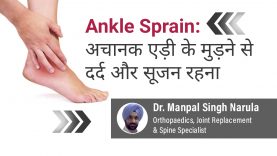

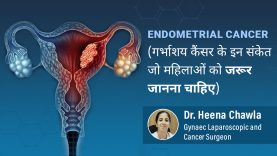
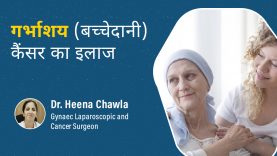

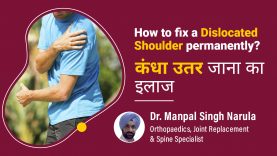
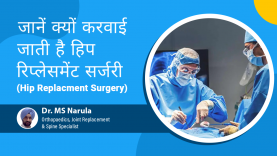
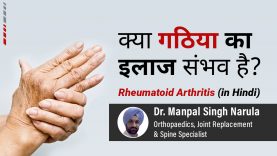

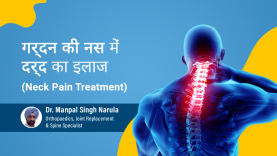
Comments (0)